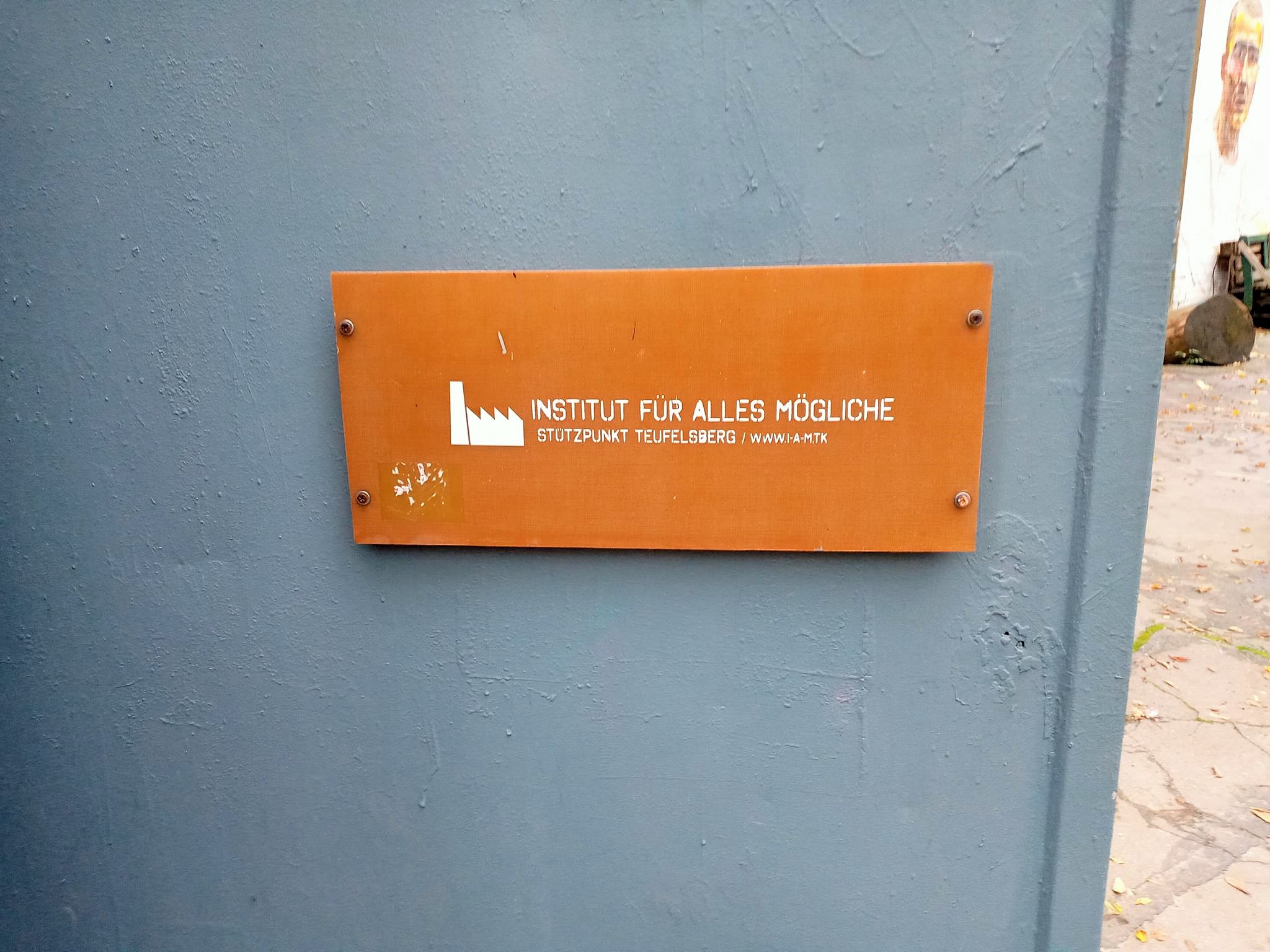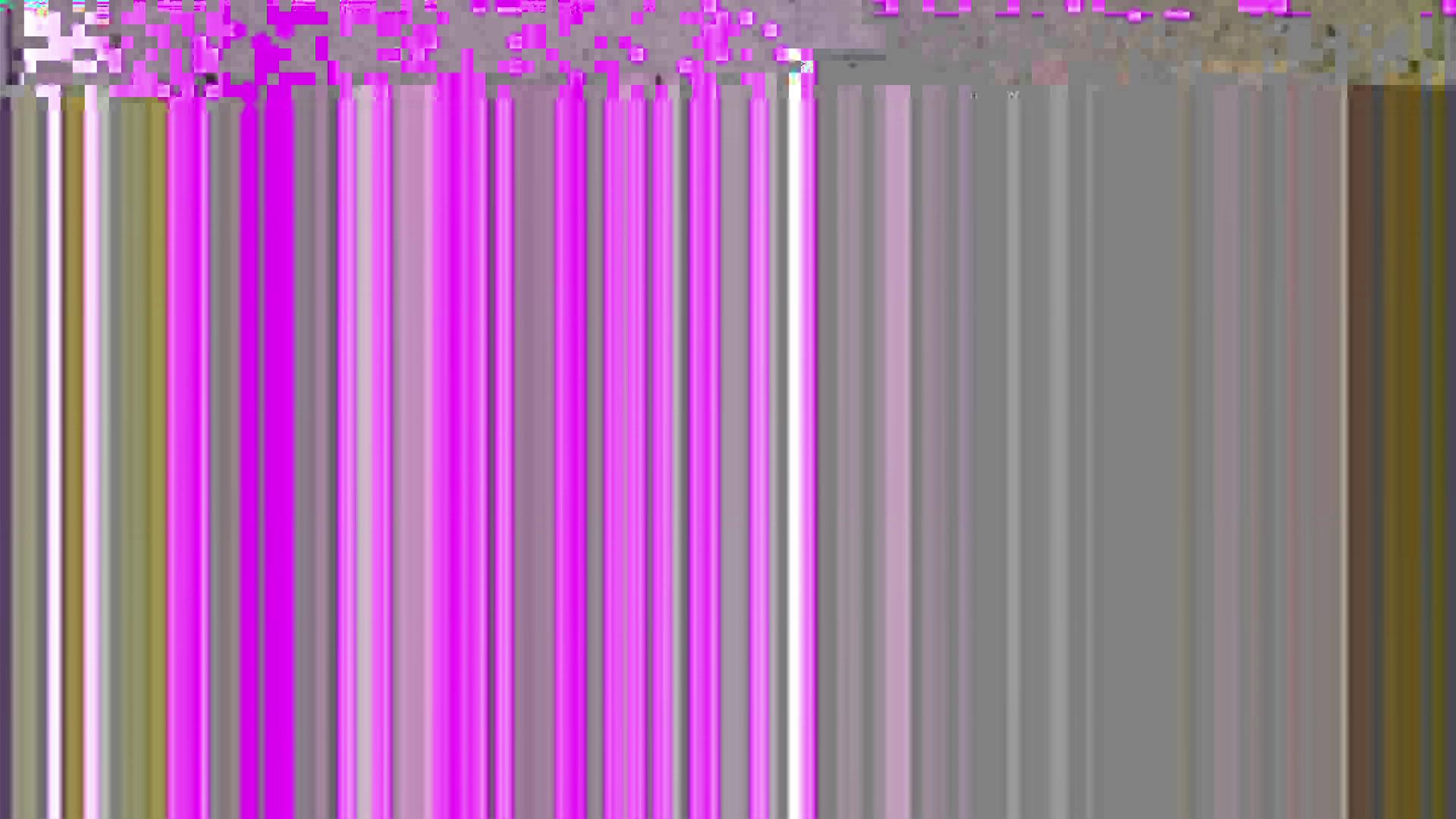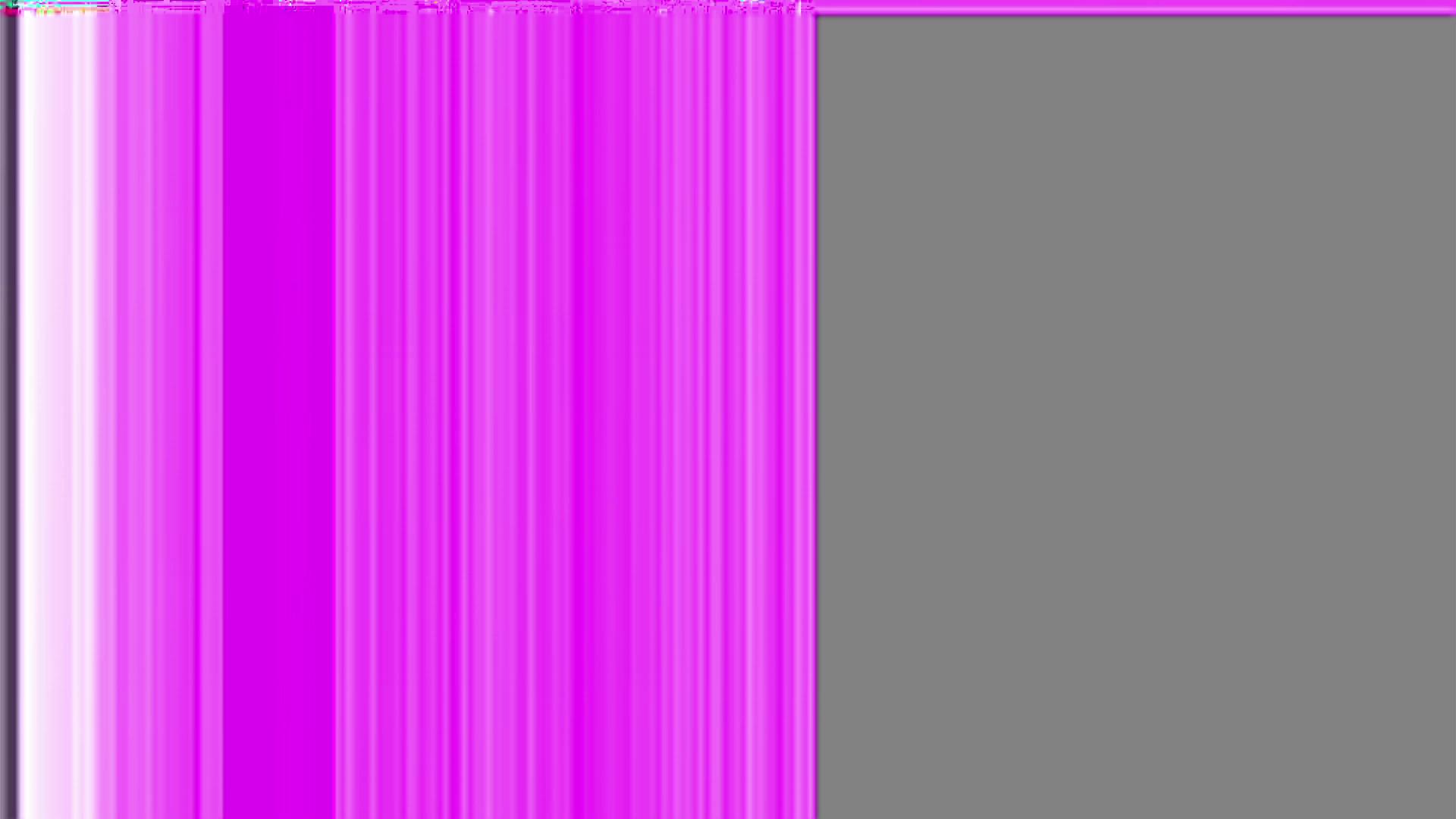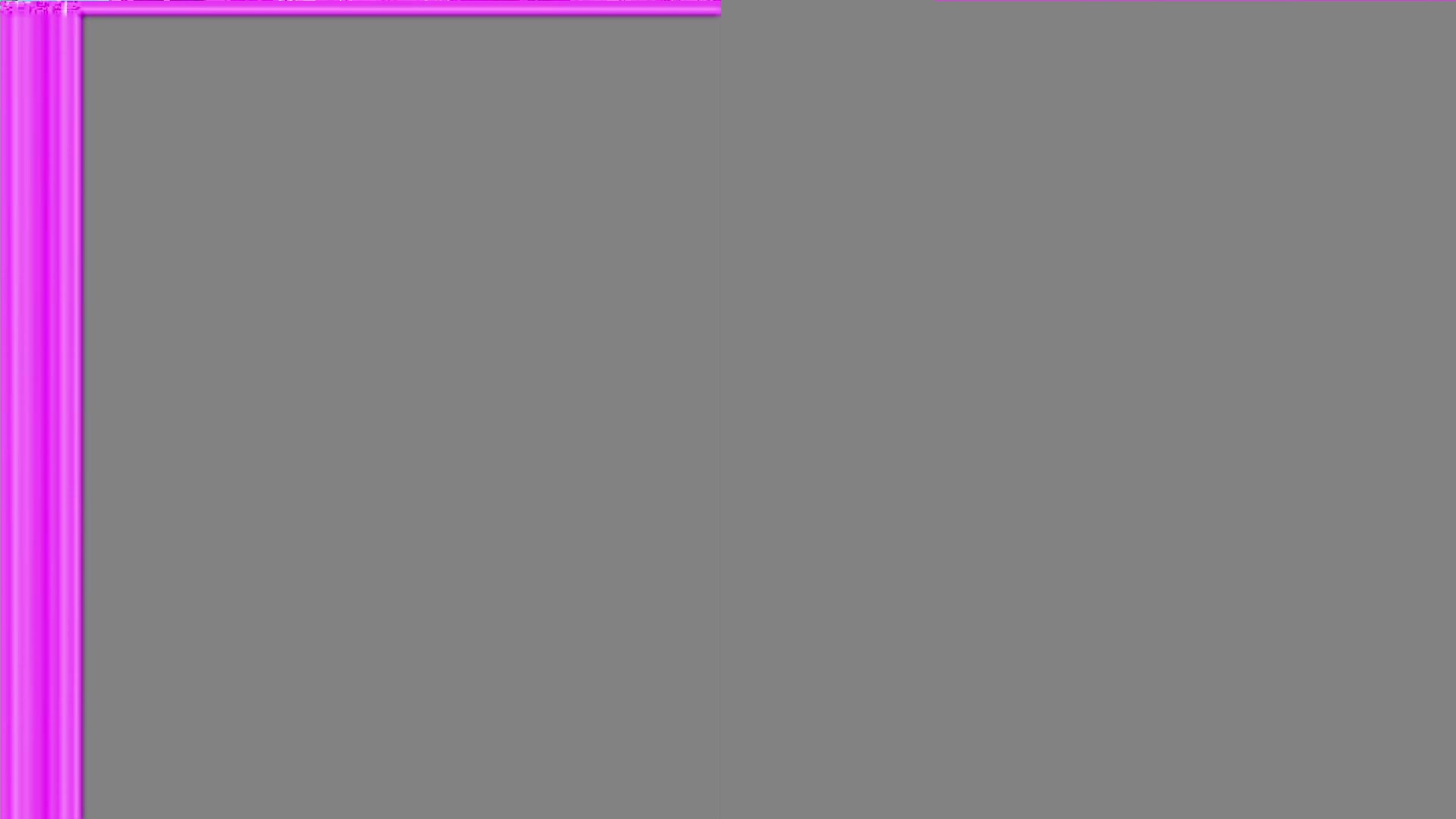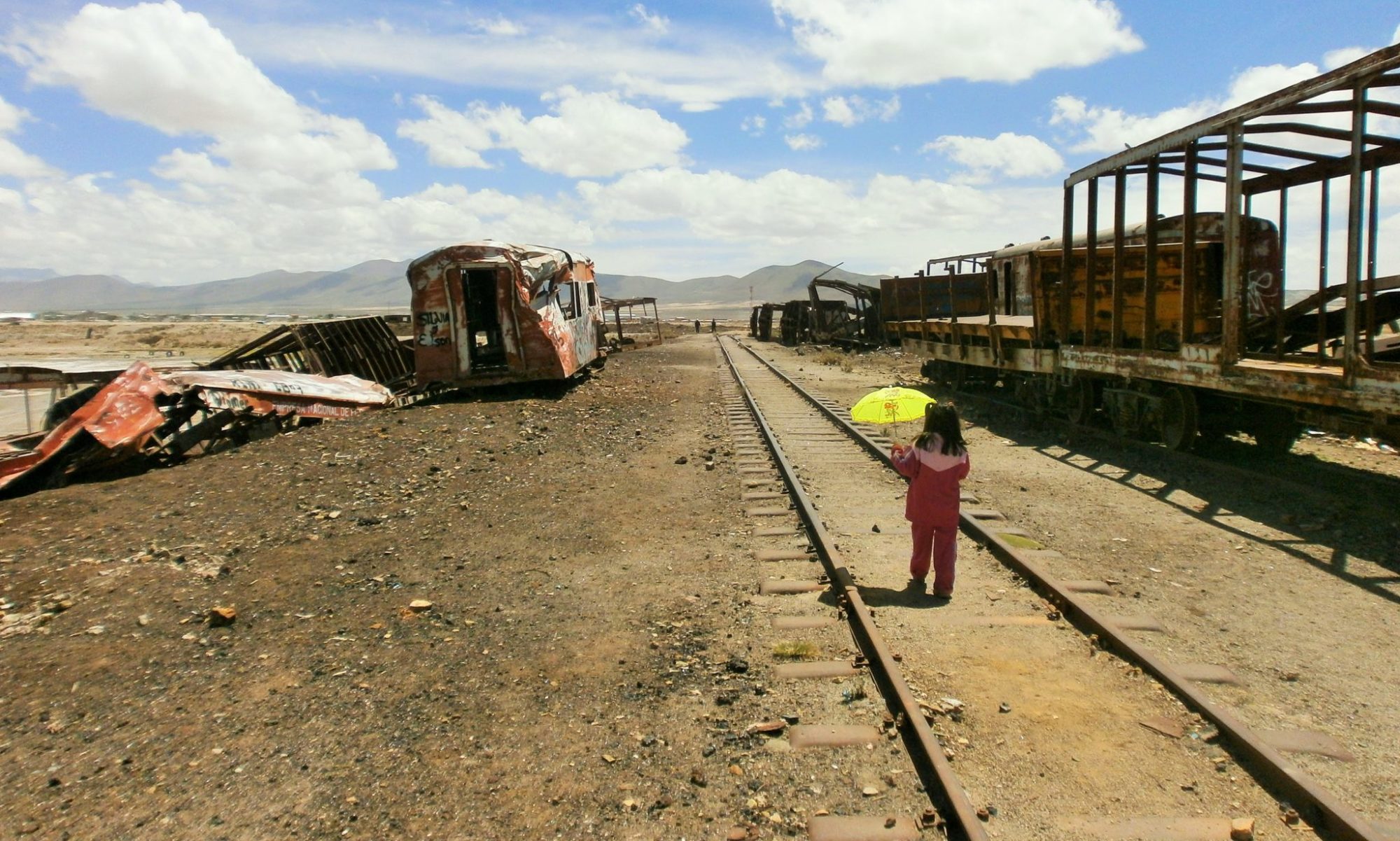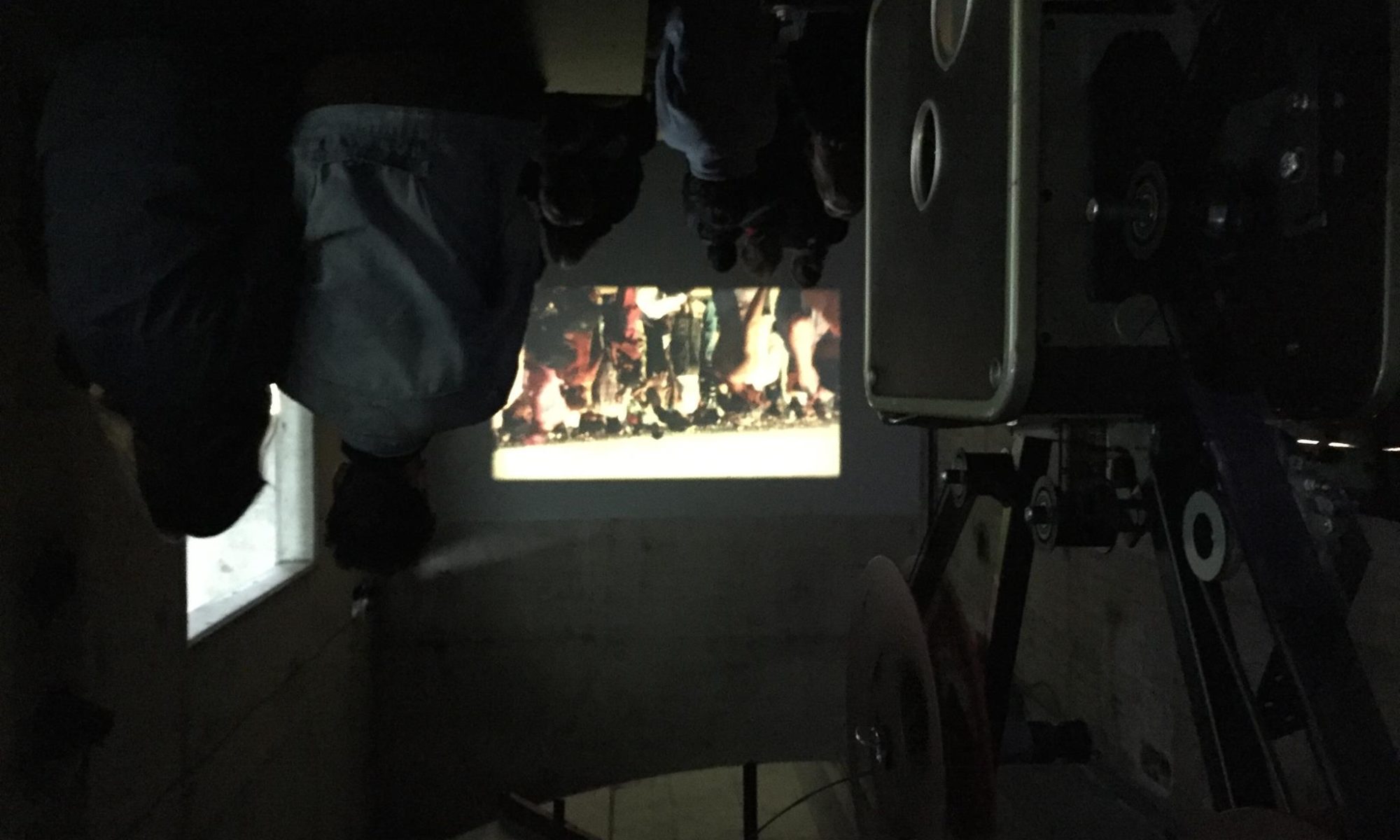This story and adventurous journey here was like entering new strange and exciting “rooms” several times. First of all it was a cool flash in Berlin to go to the Teufelsberg (=Devil’s Mountain), so let´s say this was the first big room. This Lost Place is filled with great Graffiti and Streetart, but it also has something absolutely magical and energetic around it. Perfect for creative projects. Furthermore at this former NSA spy station there was an open door at a half-decayed building, where strange noises came out. Interesting and inviting. Of course I had to go in there. That would be the second room. Behind it was a little makeshift cinema with chairs and even comfortable theatre seats, a screen on the wall took the visitors again into new rooms but this time on the other side of the world. Weird and fascinating. Room within a room within a room, even the filmed camera image did not stop there and was literally about entering rooms. Fantastic filmmaker Bernd Lützeler has set up his equipment here at an outpost of the “Institut für alles Mögliche” (=”Institute for everything possible”) to screen the experimental films that he’d made in India on 35mm celluloid, using and old Carl Zeiss TK35 film projector from GDR times.
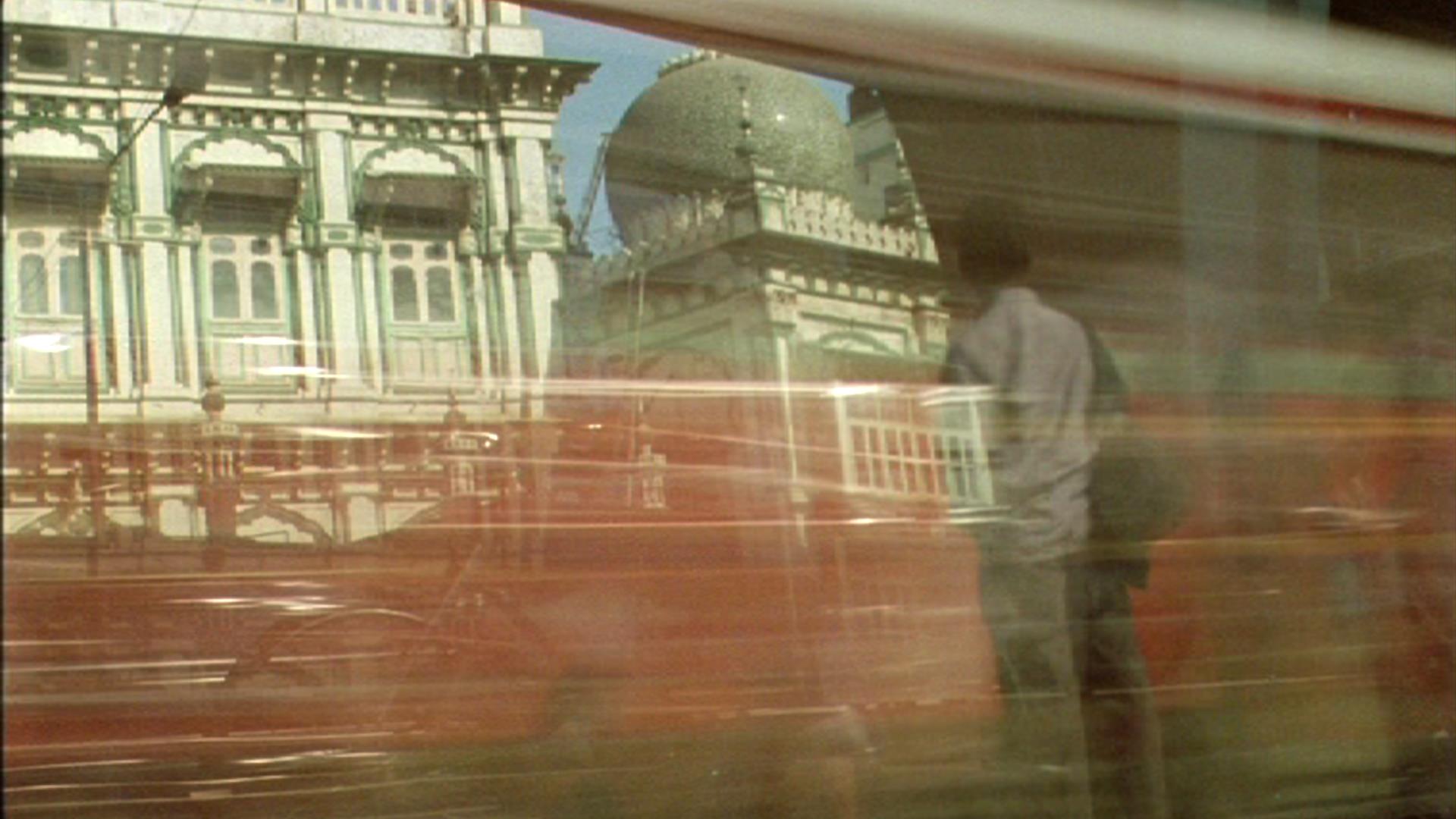
When I entered, the film “_galore” was running via a modern projector on the ceiling, as well a person was eager to work on an ancient but also very interesting looking device to get it functioning again. This was Bernd. I first looked at the presented works of the other two artist who have been also involved in this special exhibition called “Auslöser”. There were the artworks of Kirstin Burckhardt and the great photographs by visual artist Stefan Zeyen, followed by exploring Bernd’s project and the new rooms shown in his film. To perceive this kind of production in such an environment is unusually attractive and gives also additional unique impulses because of its special off place character. Of course only if you allow this and are open to it. But if not, you wouldn’t have come to the Teufelsberg anyway.
In Bernd’s cinematic work “_galore” the immersion into rooms continued. The camera leads the viewer through various small shops and little sales outlets in India, which are packed to the ceiling with products, tools and just uncountable stuff. The presentation of all these masses of things simply has an appealing effect, and the cutting and editing is also really great. In the background loudspeaker announcements from public transports in India are playing. In change Bernd also showed the films “Voice of God” and “Fultu Faltu Filim”, also shot in India.
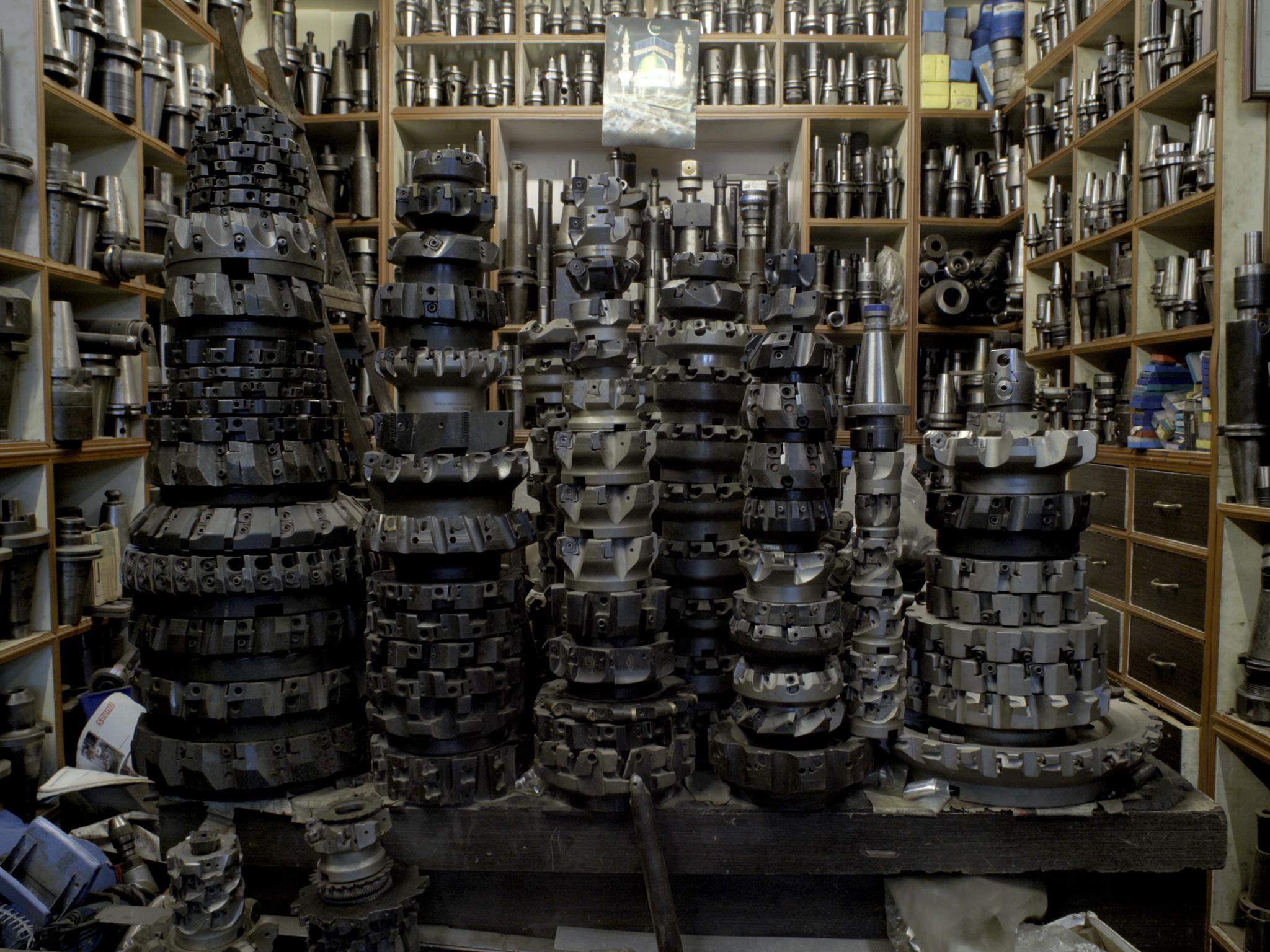
Bernd Lützeler has been travelling and discovering Indian culture extensively and regularly for almost 20 years, already in the 90s he was a big Bollywood fan. Meanwhile he shoots his very own films and besides presenting his personal style of Bollywood content, the films show as well the real but even more fascinating reality in India. Bernd is a member of the film collective “LaborBerlin” and and every year the filmmaker is present at various film festivals and involved in great projects. A look at his website with a huge amount of great recordings and film content is worthwhile, also a visit to the platform of the collective LaborBerlin, which always offers new and interesting events, workshops and productions.
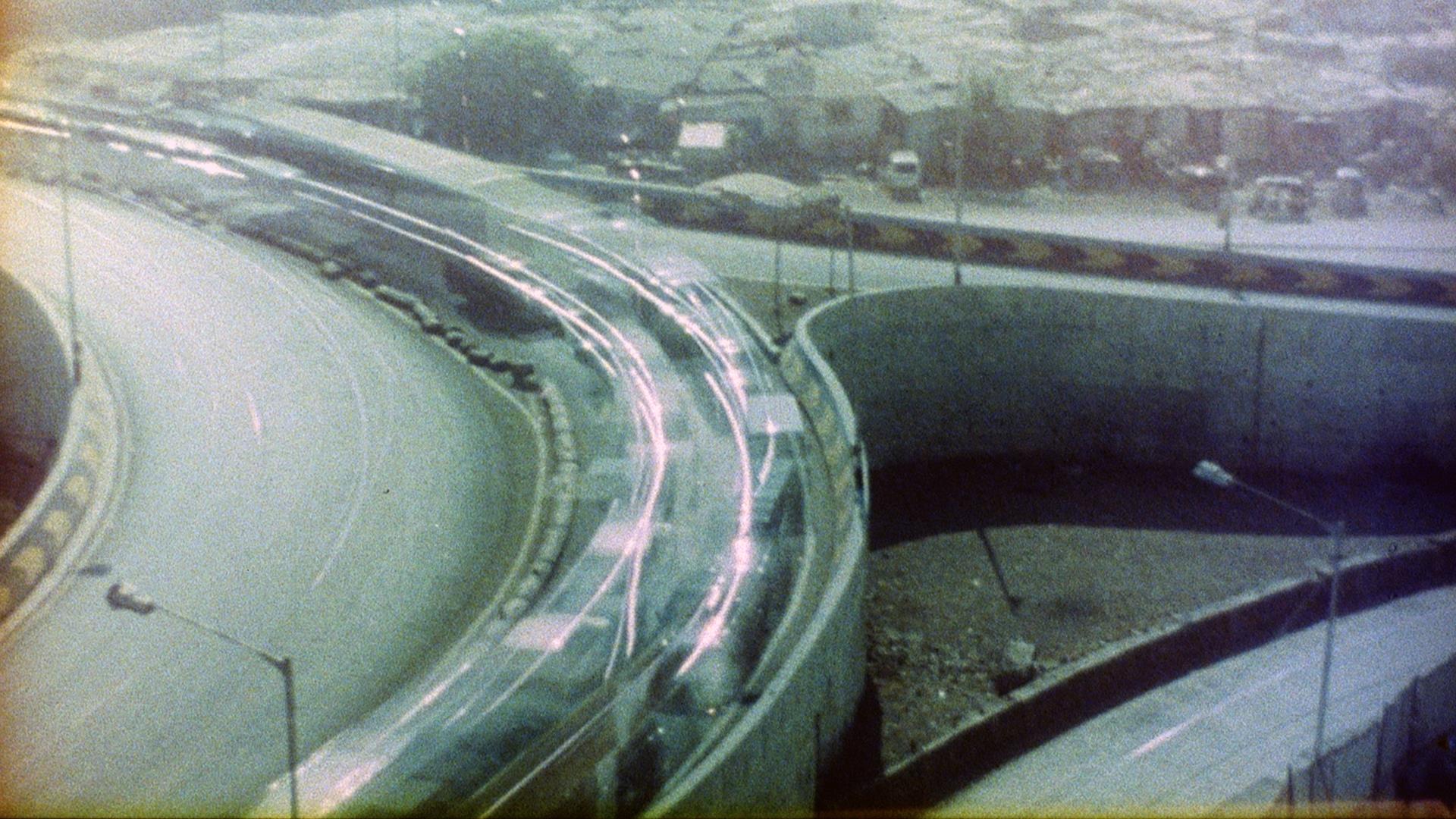
In an interview, Bernd Lützeler tells about the origin of the films shown on the Teufelsberg, as well about his other creations and the collective LaborBerlin. The podcast is in German, but the interview is written and translated into English below. In between you will find some of the great film creations made by Bernd Lützeler.
You shot most of your films in India?
That’s right. A larger part of my artistic work takes place in India. This has personal and historical reasons. That means I’ve been going there again and again for almost twenty years. Mostly to Bombay, nowadays the city is called Mumbai. And then I do one project after another there. At the moment I’m not doing anything like that, of course, because you can’t go to India at all. And if you did, you’d be pretty brave. Things are really crazy in India right now.

How long have you been doing this?
For almost 20 years. So in 2001 I was there for the first time. I was still working with a video camera back then and when I realized that I was going there again and again, it developed. Of course, there was also a history to it before. I watched a lot of Bollywood in the 90s, when nobody knew what it even was and when it wasn’t on German TV yet. At that time it was only possible to see these movies via a special satellite that could be reached close at the horizon. It had to be targeted precisely and you also had to buy for 400 German Mark an annual card to use it. Then you could watch “B4U”, so “Bollywood For You.” It was without subtitles at that time. And this means I was actually watching movies without understanding what it was all about. At some point I said, it’s probably time to go to India myself and get to the bottom of it. That’s how I got there for the first time. And because the movies and Bollywood are in Bombay, so I went to Bombay. But then a lot has also happened for personal reasons. I made a lot of friends there, which also led to the fact that I went there again and again. In principle it is like a second home for me now.
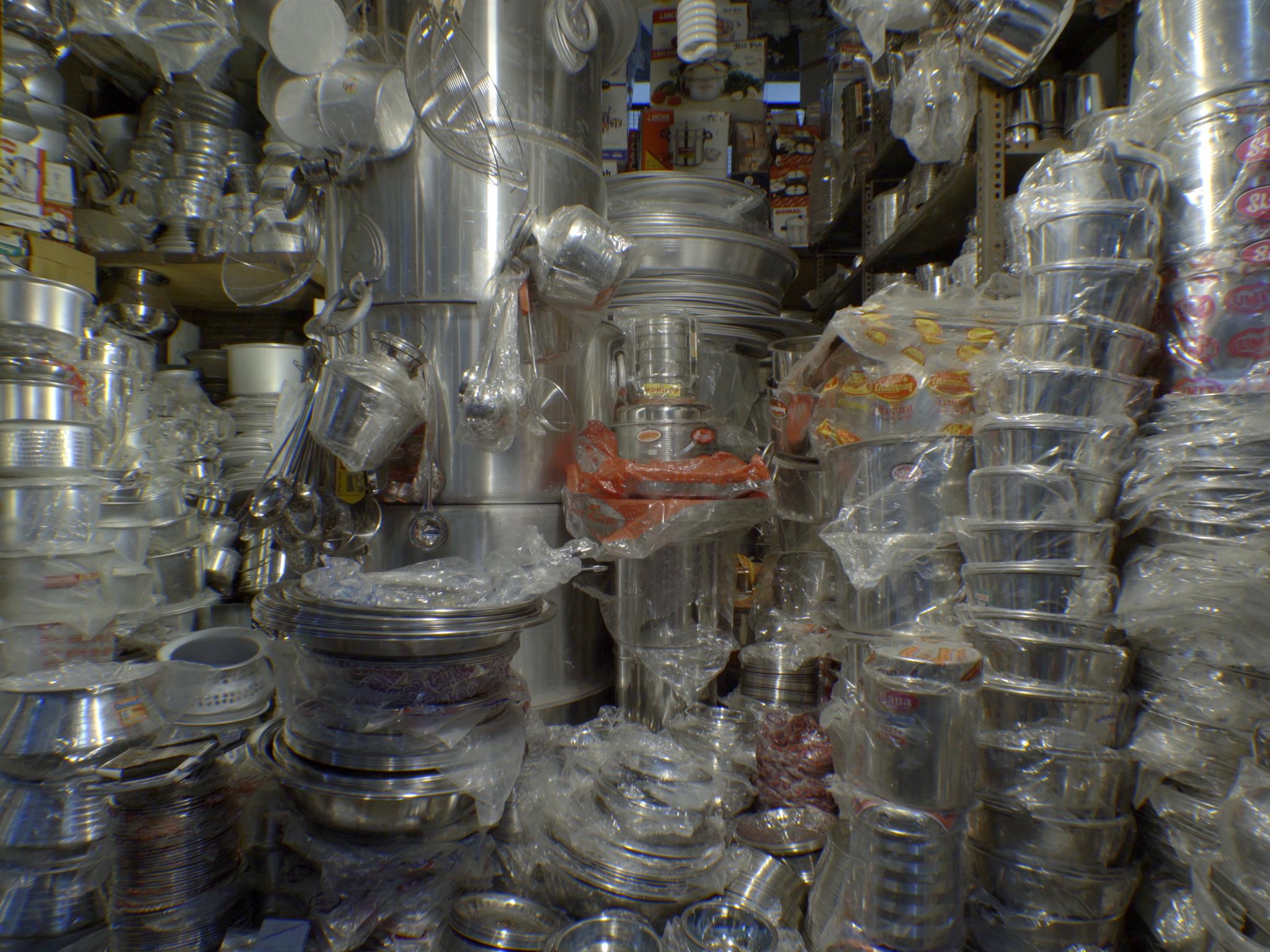
Bollywood is always totally staged, very theatrical and peppered with a lot of emotions. But what you are showing here and what I have looked at are rather simple common objects or everyday situations that you take up. So quite banal things, but which you present in such a mass that it seems very fascinating.
I think what fascinates me about it is the exaggeration and the burlesque inordinateness. And also the techniques how you can push films in a certain direction. This are definitely the main aspects. Then of course Bollywood has this special reality as it is shown in Bollywood movies. So this artificial reality has of course nothing to do with the real Indian reality. However all this is again so extremely different that you just are going to move between these really blatant extremes. And that is actually also an interesting field of tension and there is a lot of frictional energy and as well a lot of losses in terms of what is really going on. That’s why I’m interested.
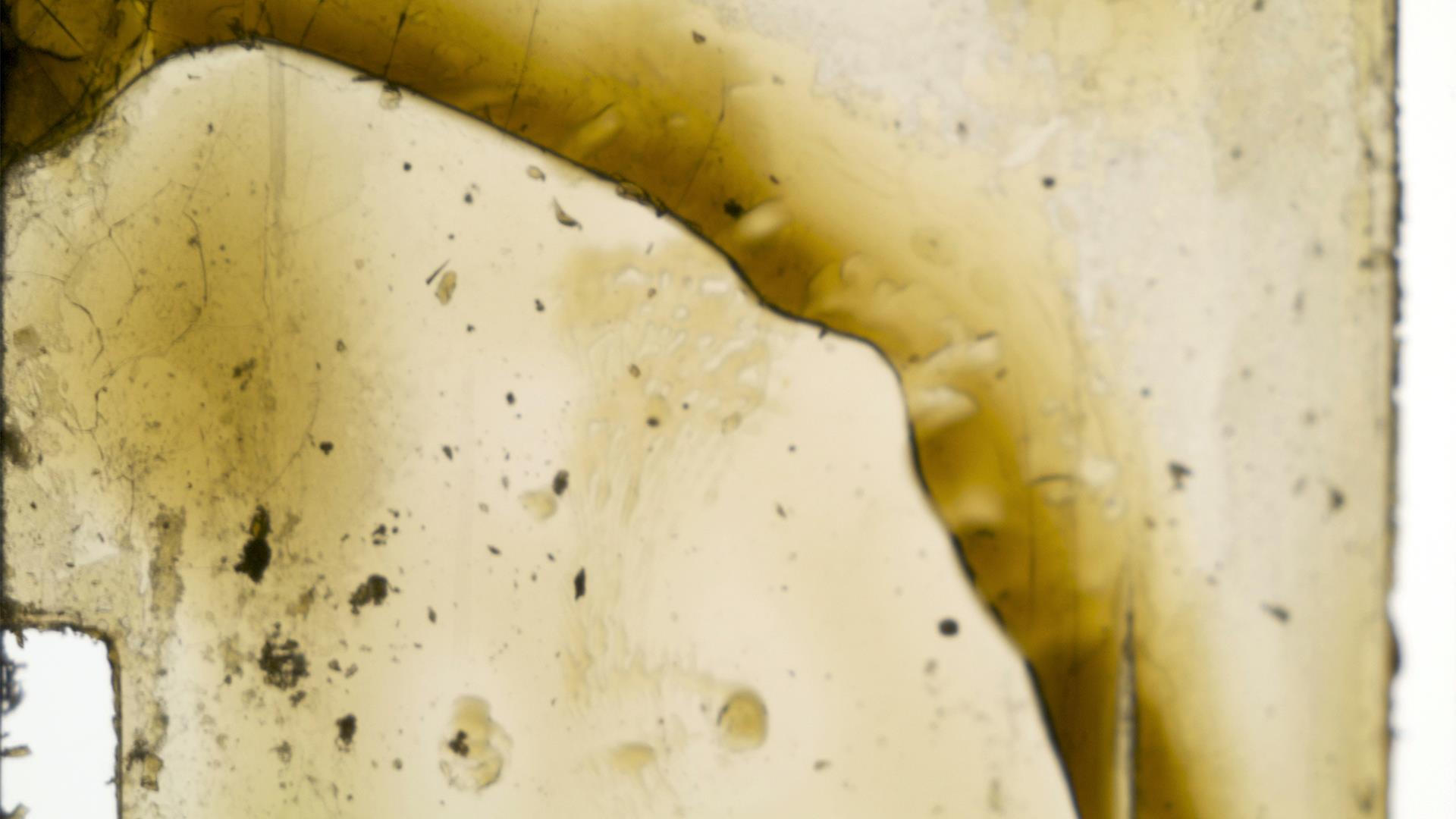
Do you show your films in India as well?
Yeah, well, not every day of course. But I don’t show it here every day neither. But if I can, I’ll show them in India also for sure. It took a little longer until this happened and to get recognised over there, but meanwhile it has often worked out quite well during recent years. I also got a lot of very good feedback.
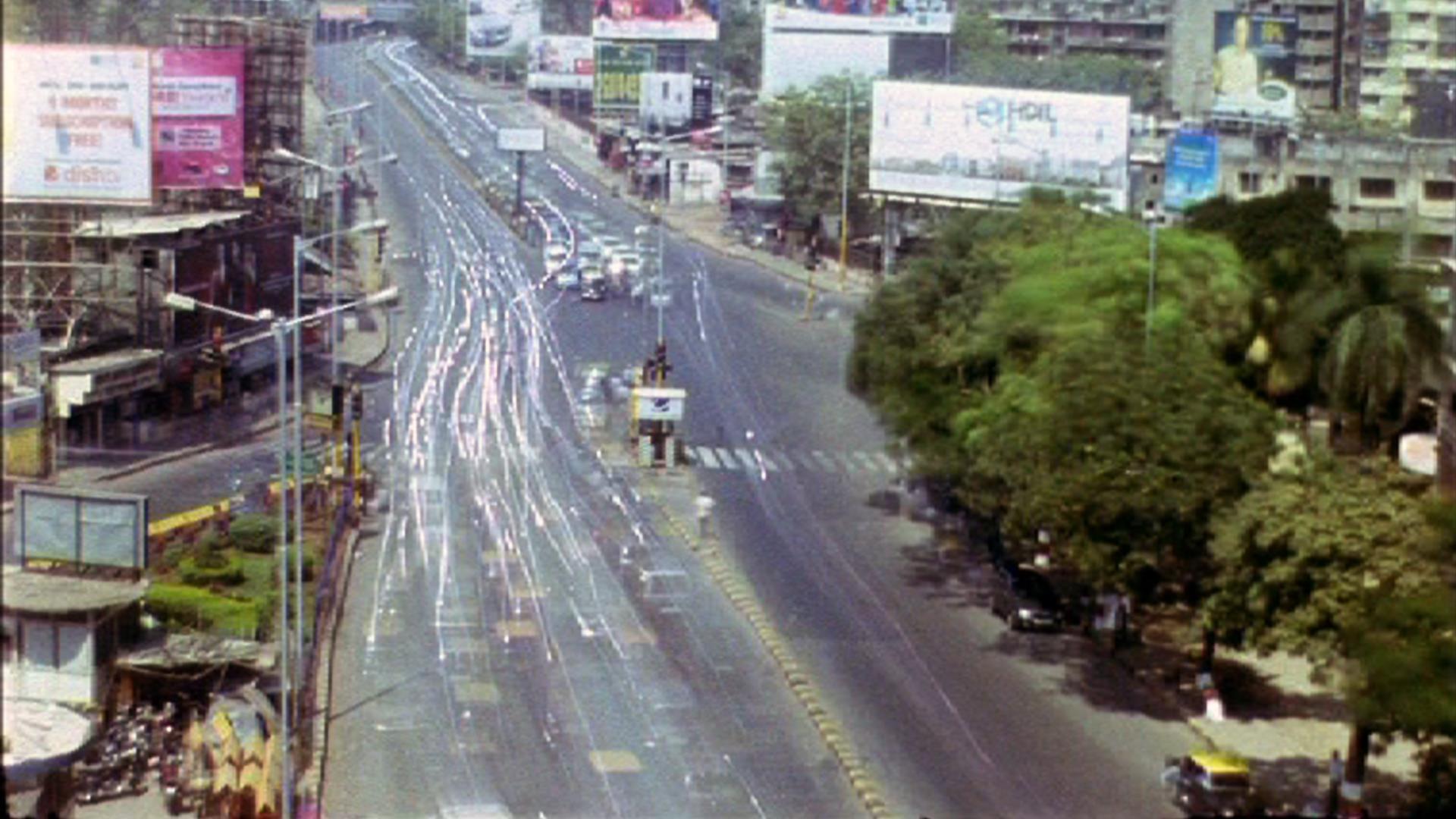
Another shown film is “Voice of God”. So you also deal with spiritual thoughts or ideas. Like how would it be if God would suddenly come to earth and that would be in India. What would he do then or which job would he choose? And you got the idea that he would be a dubbing artist for movies. So also as a kind of gimmick or parody.
That’s right. So of course there are also many clichés about India that have become so entrenched that they don’t go away at all. No matter what happens. And even more are being created. But the old ones are holding up. Almost always when I tell people that I am going to India, they say: “Oh yes, to the ashram, aha”. Or something with yoga or stuff like that. And I’m not doing anything like this at all. It’s just a whole other world for me. But in the mentioned film you can hear a special voice speaking in the background. There is an epic of Mahābhārata, which was the most successful television series in India in the 80s. And there’s a very famous voice – the voice of time, which is similar to the voice of God. I was able to get that specific narrator, Harish Bhimani, to do the voice over in my film. And that’s why he is actually “Voice of God”. That’s the name of the film and it practically plays with the voice over as an aesthetic element and the question of why is it there for and what effects has it on you. Because in this case you hear it all the time, but you don’t understand a word. And then you have to ask yourself at some point, how do I perceive that? So am I in or out? Am I letting this get to me or not?
This event here takes place for three days on the Teufelsberg. Where else do you show your films? Do you always look for such special lost place locations? Or do you have a studio somewhere?
So it changes a lot. I usually send my films to film festivals and show them there. Now we’re more in the art and gallery space here. This isn’t exactly my home. That was actually also a story that happened because people met and said, let’s do a project together. Of course there is no White Cube here either. It’s not a famous gallery where all the works are immediately bought away, but it is total off space. And so I feel quite comfortable here actually. But the locations change of course. I am also part of a collective of filmmakers called “LaborBerlin”. We are now about 50 people who all work with analogue film. So with 16mm, with 8mm or with 35mm. We have a large filmlab and workspace in the Berlin district of Wedding and a few years ago we collected all these machines that nobody wanted to have anymore. Now we work with them ourselves. Yeah, so we’re a real collective. We are grassroots democratic, we have a nonprofit agenda and we are also officially registered as a nonprofit association. In this context I also often show my work, so not only, but many projects and ideas result from it. We also organize our own events and do our own film screenings.

When I walked into the room earlier, the film was running over the projector on the ceiling. But you tinkered with one of those older machines. You’re running the films via that?
I’ve got three films here and one of them runs in a loop for about two and a half hours. Its name is “_galore”. That’s the one with the shops and interiors of Indian stores that are stuffed to the ceiling with products. Then I have two other films. So the just mentioned “Voice of God” and then another one called “Fultu Faltu Filim”. I show them at certain intervals directly on 35mm celluloid. When you came in, I probably just had problems with the projector and tried to solve them somehow.
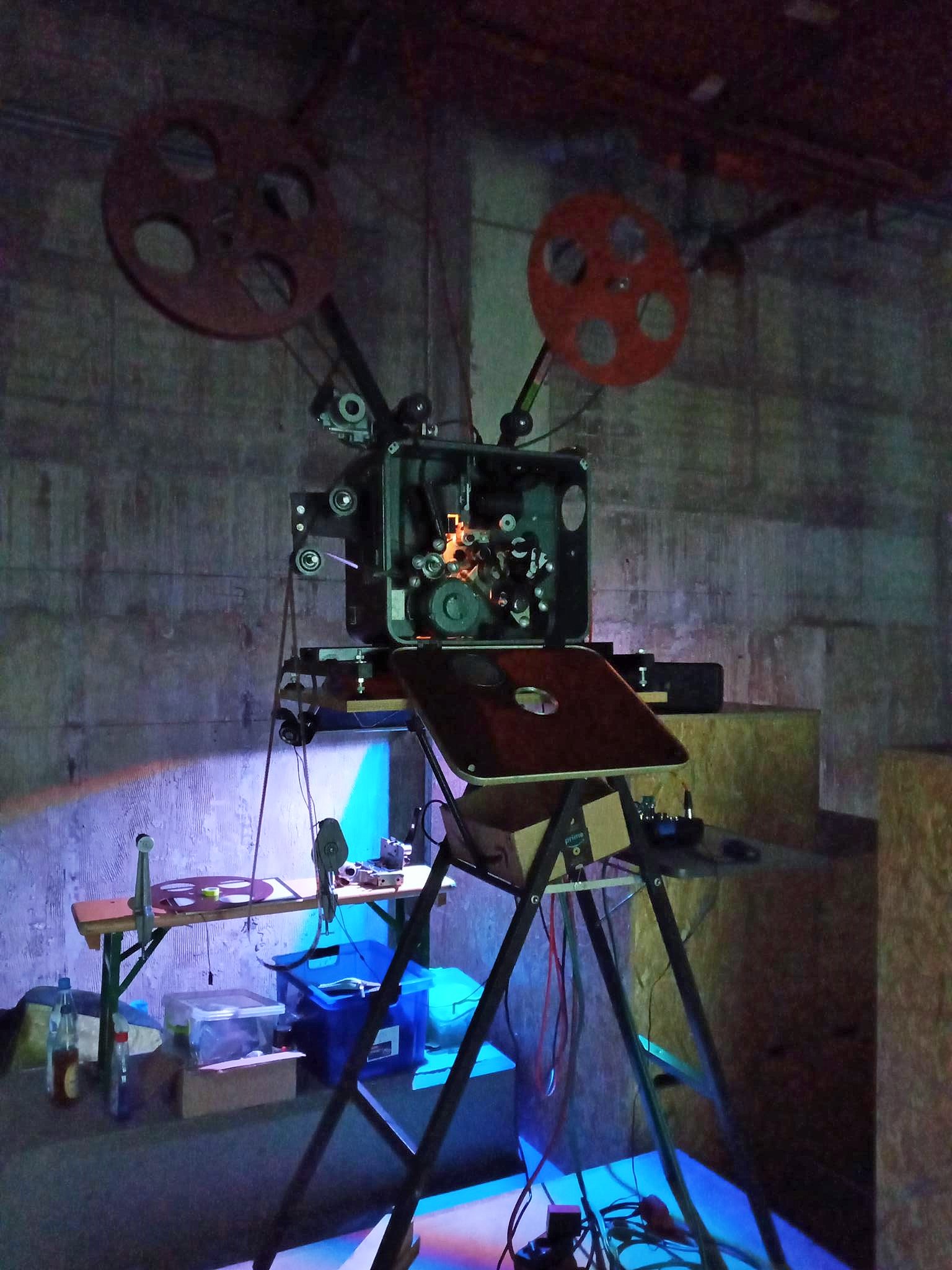
In the artistic genre of film, photography is also closely involved. Do you take pictures too, or just the filming?
That’s very rare and happens seldom. But I have a series of photos called “Movieland” that I would have loved to bring to the public, but I didn’t really find any good ways to do it yet. They are now so old that I thought I would just put them online for free. Otherwise they just rot in the drawer. But that is rather the rarity.
How do people find you and your stuff on the Internet?
Under the label “NoMasala” you can find me quite fast or you can google me under the name Bernd Lützeler, my website should pop up. You can also find LaborBerlin there. So our collective is not exhibiting the works of all artists online and we don’t write our names on the website because we are a collective. But you get all the information about our activities and there is a newsletter. Also others are welcome to invite us. For example to Frankfurt. We also organize workshops and teach how to develop films by hand. Some of our group did that last year in Frankfurt. They wanted to organized a workshop at the German Film Museum and have been invited to do attend. I think this was a workshop with children. That was certainly a very nice project. If others are interested, just contact us.
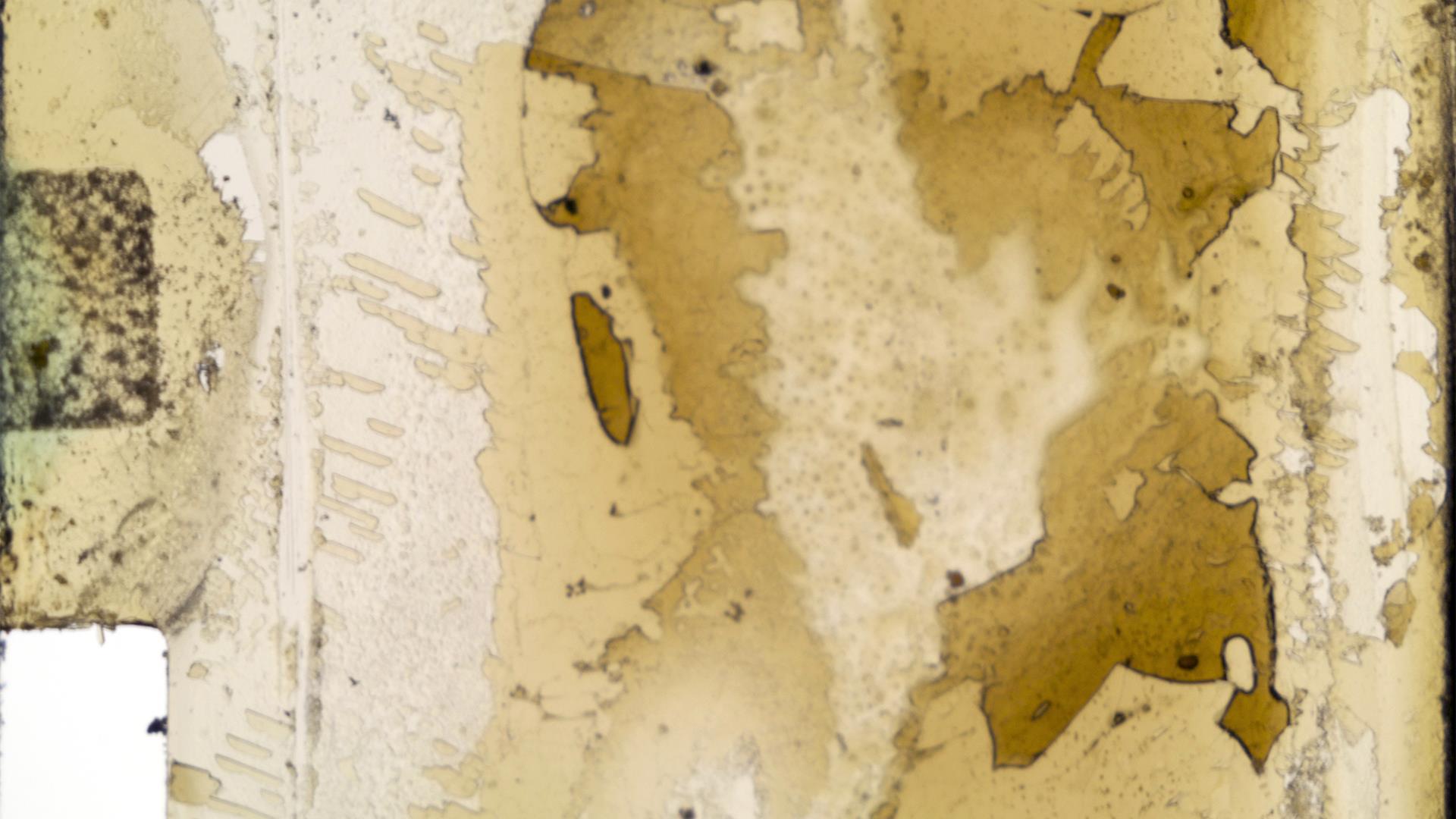
Fultu Faltu Filim – 2018, 35mm, 2 min
Super-8 footage, found on a flea market in Bombay, deteriorated over several decades of monsoons and heat waves, scanned on a home-made film scanner, sent through a digital glitch environment and finally, digitally exposed onto 35mm polyester print film in Mumbai.
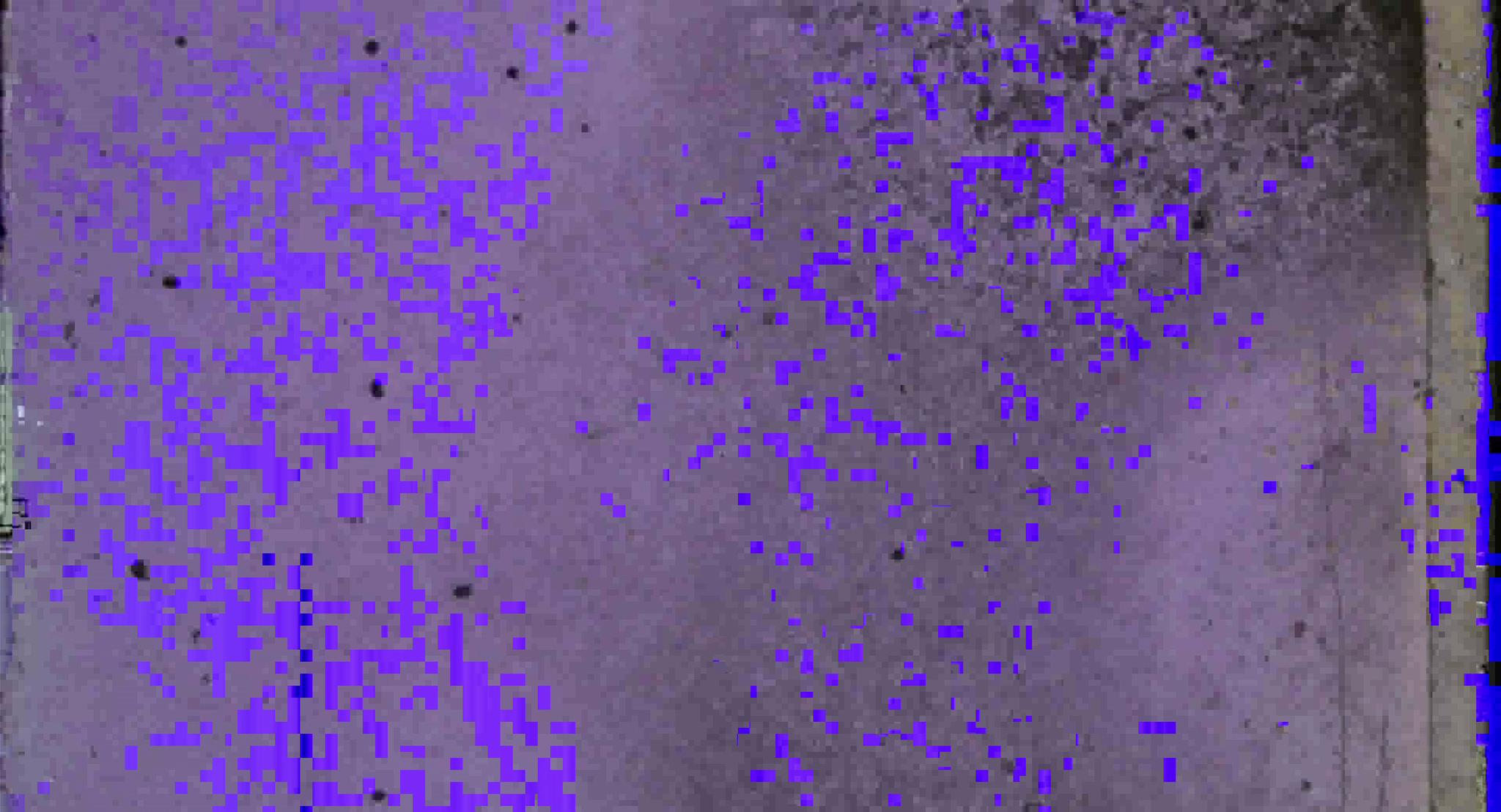
_galore – 2018, DCP, 9 min
The streetscapes of contemporary Indian metros are largely dominated by products. The typical local shop can be described as a windowless, rectangular box. Stepping into such a shop can be like entering a new world: Filled with products galore up to the ceiling. The product itself serves as the interior design. Shopping galore. Products galore. Profits galore.
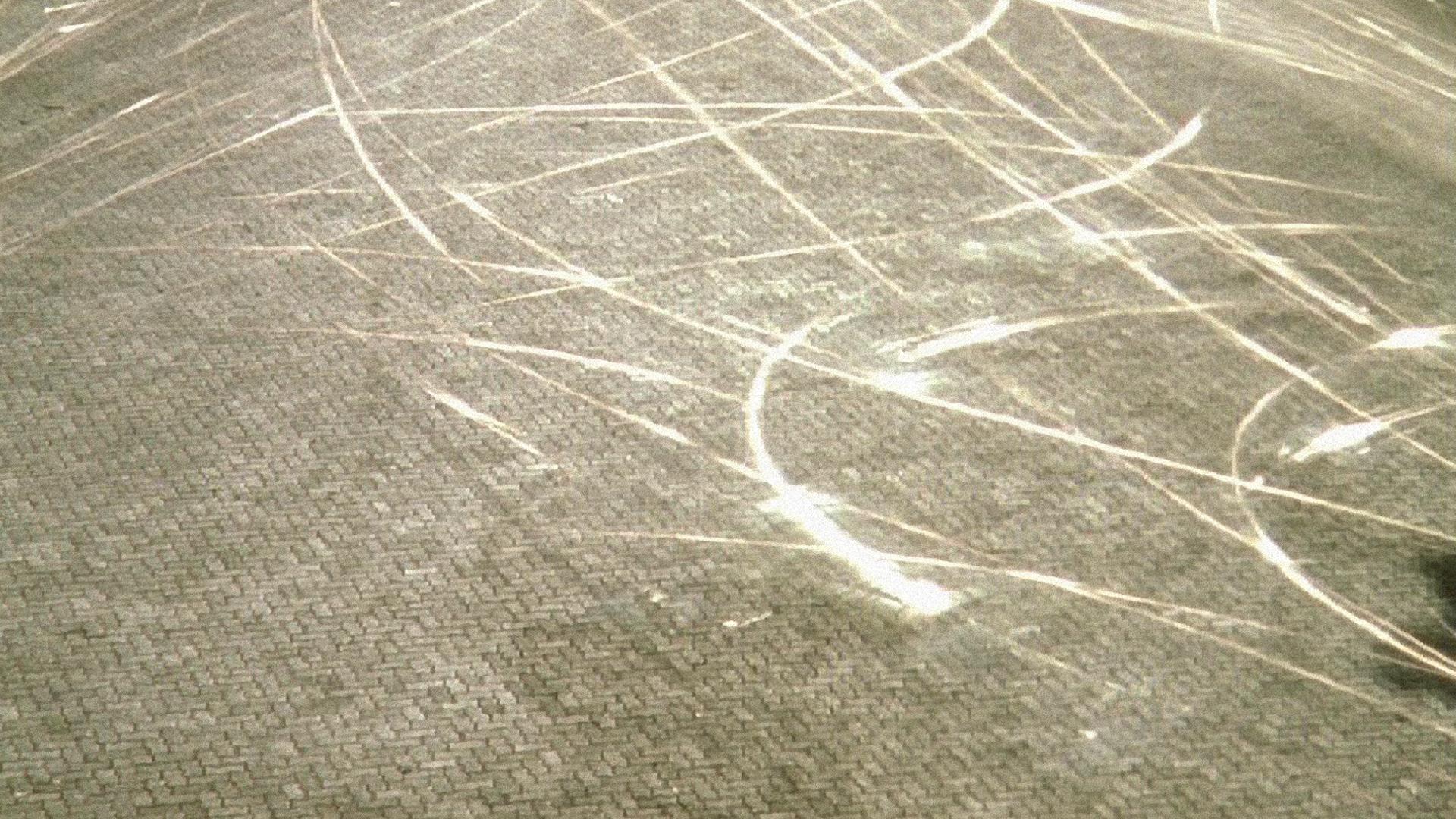
Camera Threat – 2018, double projection 35mm & DCP, 29 min
Somewhere in the dreary spheres of Mumbai’s film industry, Camera Threat explores the ambivalent relationship this film city has with the moving image. Seated on a casting couch, two actors are getting stuck in impromptu conversations on the side effects of a world that no longer bothers to tell facts from fiction. An expanded multi-genre film within the constraints of the so-called Masala Formula known from Indian cinema. This video is a documentation, shot during a live double projection of the film: In the cinema, two projectors, an analogue 35mm film projector and a digital projector are running side by side, projecting analogue and digital film fragments onto the same screen, where both images merge and become one. In order to keep both projectors synchronized, the filmmaker is sitting in the projection booth, manually controlling the speed of the two projectors.
Photos from “Movieland”

the Voice of God – 2011, 10 min
If God would come down to earth and try to earn a living in Bombay, most probably he would very soon become successful as a voice over artiste, lending his voice to thousands of hindi movies and even more documentaries and public service films in India. A melo-dramatic docu-drama with voice-over in stop-motion and long-time exposure.
Photos from “Movieland”

Movieland – photo series, 2005-2010
One important question of our times is whether cinema is copying from reality or vice versa. However, the fantasies of cinema would never come alive without the imaginary spaces created by the theatres…
Photos from “Movieland”

Bernd Lützeler about his work: „In my films, installations and expanded cinema works I often explore the techniques of moving image production and presentation in interrelation with their form and perception. Therefore, loops, found footage and the disclosure of DIY- (Jugaad) and analogue technologies have become an integral part of my work. I am an active member of the artist-run filmlab LaborBerlin e.V., a space where filmmakers can process, edit and copy their own films on 8 and 16mm celluloid film. Another strong influence in my work are the aesthetics of popular Indian culture. Over the last sixteen years I have spent a significant amount of time in Mumbai where some of my projects were produced. What fascinates me, is seeing universal global themes like urban angst, mass media or migration gaining an emphasis against the backdrop of a contemporary urban India.“
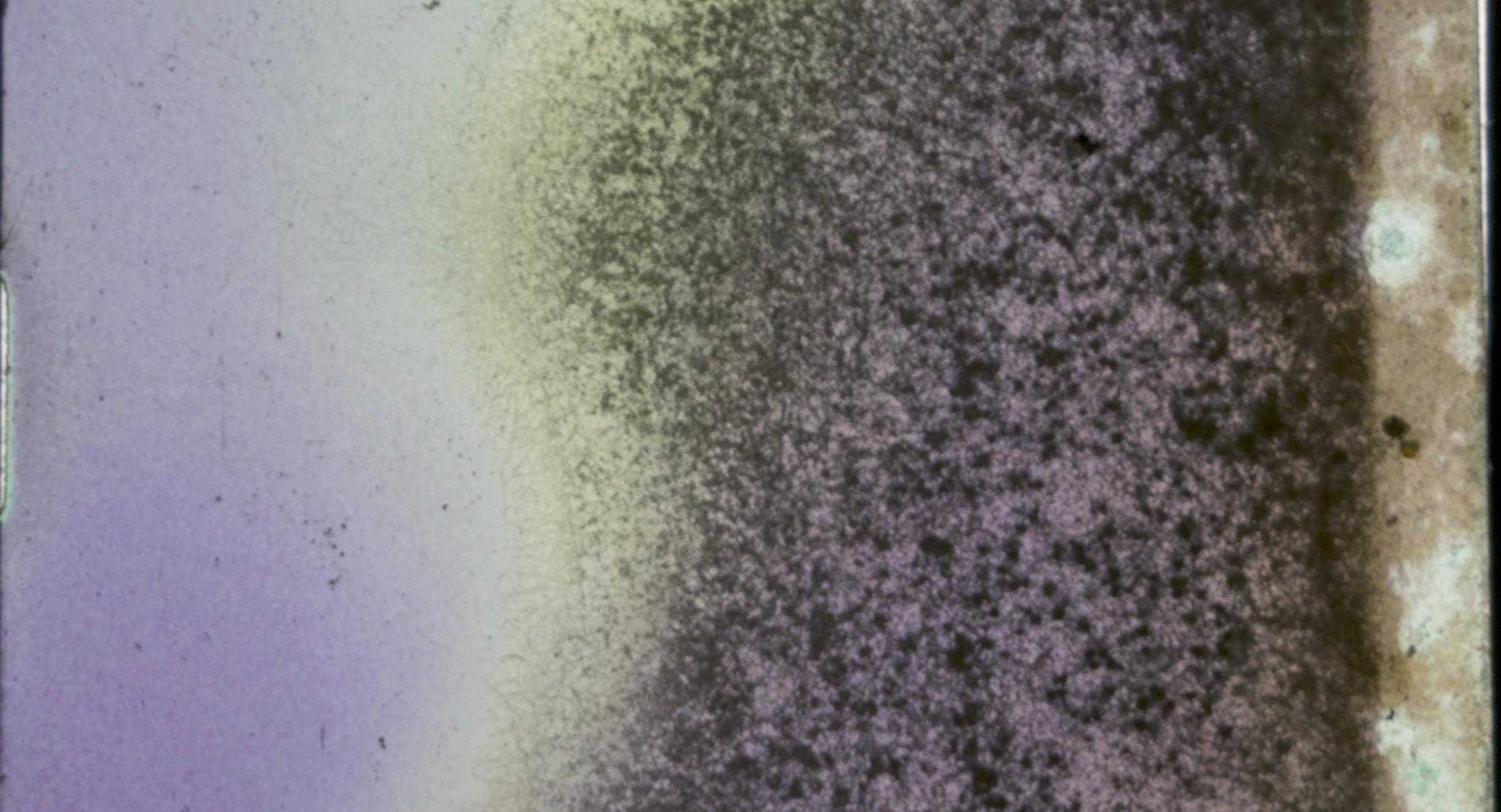
INFOTHEK
Bernd Lützeler
![]() Website: http://www.bernd-luetzeler.de
Website: http://www.bernd-luetzeler.de
![]() Vimeo: https://vimeo.com/nomasala
Vimeo: https://vimeo.com/nomasala
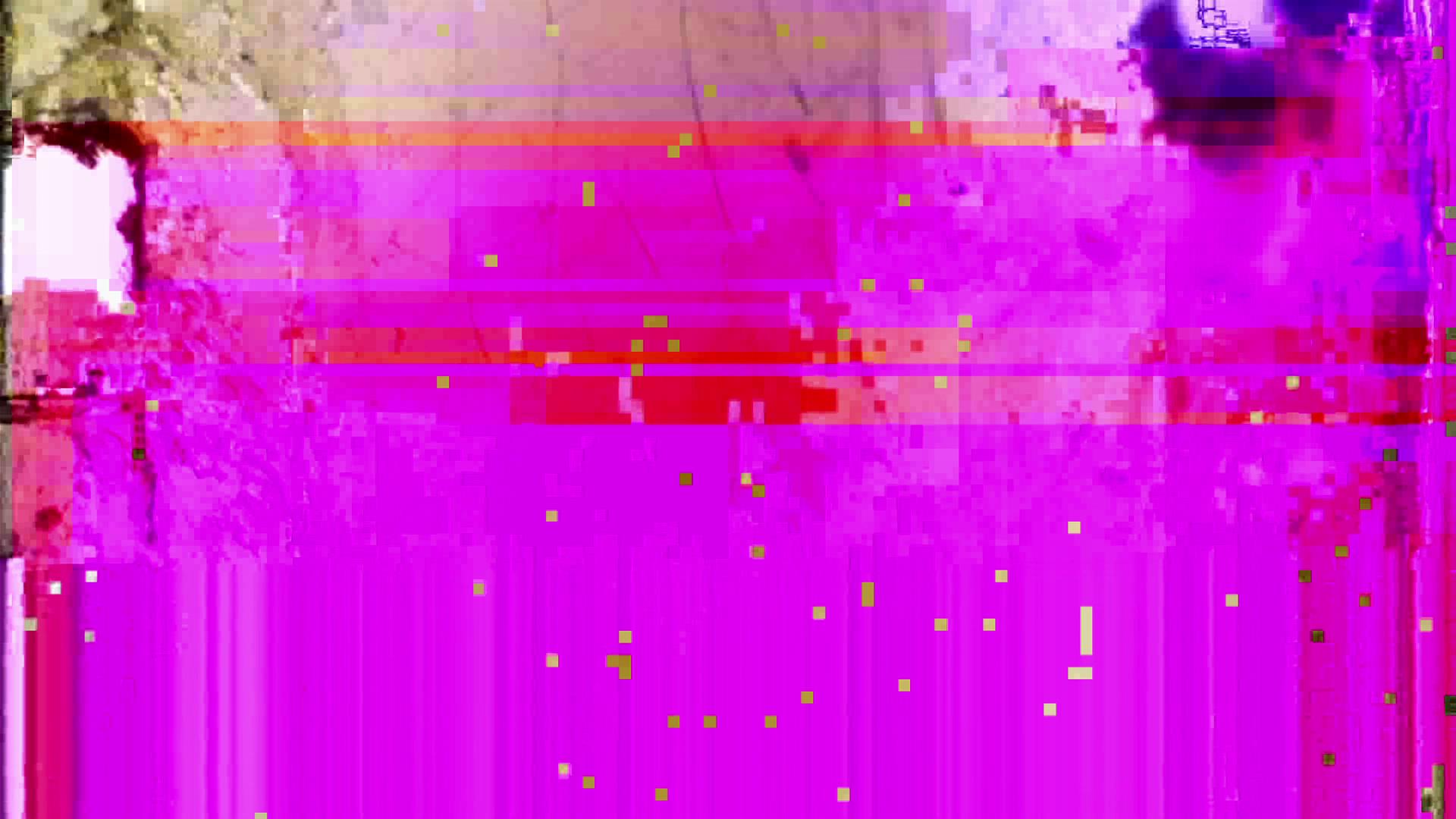
LaborBerlin e.V.
LaborBerlin e.V. is an artist-run film lab open to everyone interested in analogue film practice, embracing an experimental & DIY approach to moving image production.
![]() Adress: Prinzenallee 58, 13359 Berlin
Adress: Prinzenallee 58, 13359 Berlin
![]() Email: labor.organisation@gmail.com
Email: labor.organisation@gmail.com
![]() Website: http://laborberlin-film.org
Website: http://laborberlin-film.org
![]() Facebook: https://www.facebook.com/laborberlin.film
Facebook: https://www.facebook.com/laborberlin.film
![]() Instagram: https://www.instagram.com/laborberlin
Instagram: https://www.instagram.com/laborberlin
![]() Youtube: https://www.youtube.com/channel/UC3f7x6W6-kD-MyjiO7LGU5w
Youtube: https://www.youtube.com/channel/UC3f7x6W6-kD-MyjiO7LGU5w
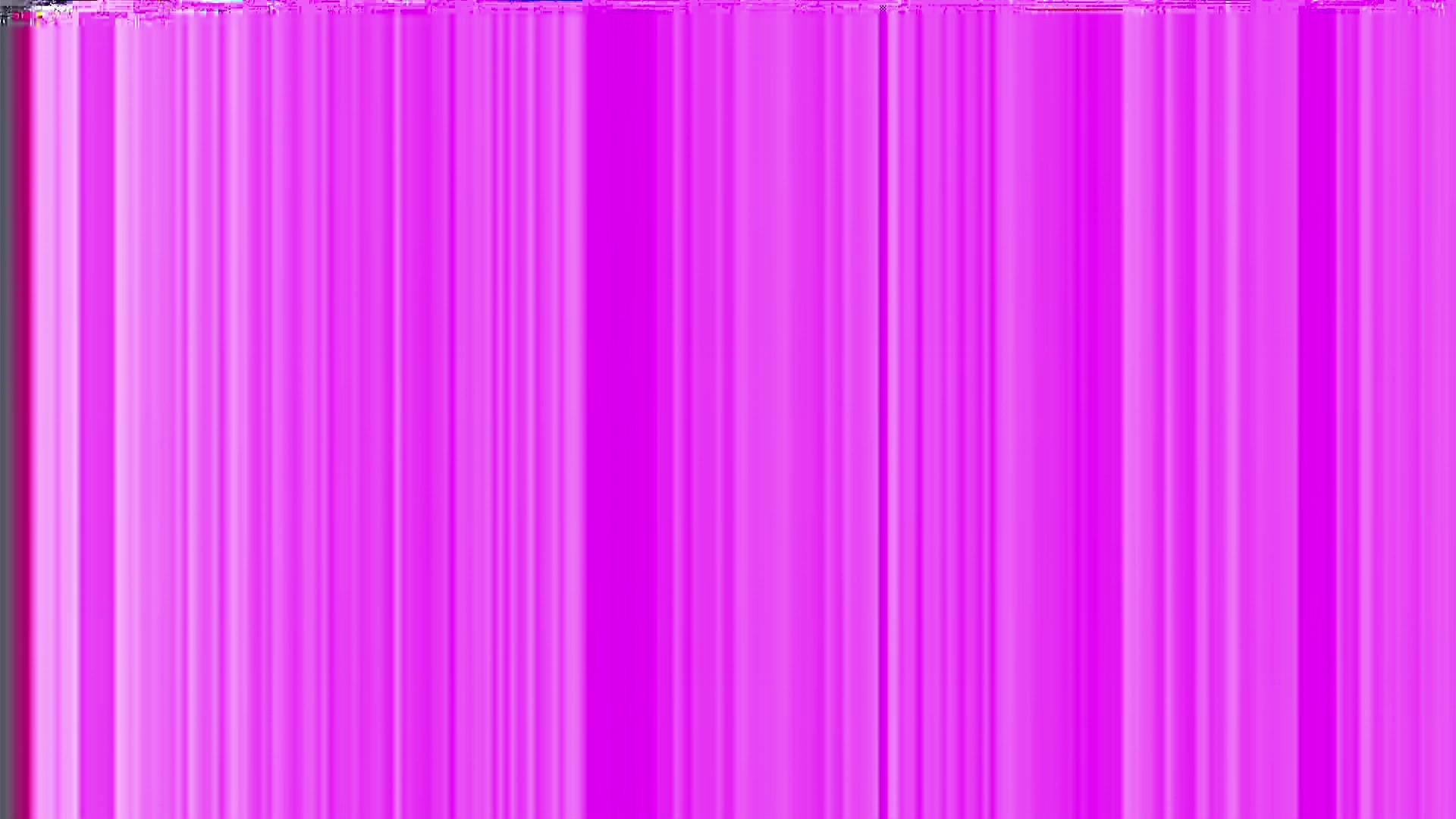
Institut für alles Mögliche
Berlin’s mostest Institute for the world! We are combining projects, spaces and people into an extended network of artistic infrastructure.
![]() Website: https://www.i-a-m.tk
Website: https://www.i-a-m.tk
![]() Facebook: https://www.facebook.com/IAM.StuetzpunktTeufelsberg
Facebook: https://www.facebook.com/IAM.StuetzpunktTeufelsberg
![]() Facebook: https://www.facebook.com/IAM.Pressestelle
Facebook: https://www.facebook.com/IAM.Pressestelle
![]() Instagram: https://www.instagram.com/das.institut
Instagram: https://www.instagram.com/das.institut
![]() Twitter: https://twitter.com/DAS_INSTITUT
Twitter: https://twitter.com/DAS_INSTITUT
